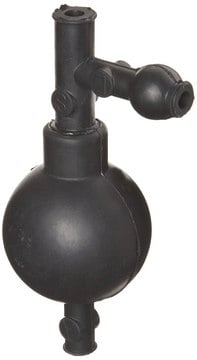248878
Hexane
≥95%, spectrophotometric grade, suitable for UV/Vis spectroscopy
Synonym(s):
n-Hexane
About This Item
Recommended Products
product name
Hexane, spectrophotometric grade, ≥95%
grade
spectrophotometric grade
Quality Level
vapor density
~3 (vs air)
vapor pressure
256 mmHg ( 37.7 °C)
5.2 psi ( 37.7 °C)
~132 mmHg ( 20 °C)
Assay
≥95%
form
liquid
autoignition temp.
453 °F
expl. lim.
7.7 %
technique(s)
UV/Vis spectroscopy: suitable
impurities
<0.020% water
evapn. residue
<0.0005%
refractive index
n20/D 1.375 (lit.)
pH
7
bp
69 °C (lit.)
mp
−95 °C (lit.)
density
0.659 g/mL at 25 °C (lit.)
λ
H2O reference
UV absorption
λ: 195 nm Amax: 1.00
λ: 210 nm Amax: 0.30
λ: 220 nm Amax: 0.10
λ: 230 nm Amax: 0.05
λ: 240 nm Amax: 0.02
λ: 250-400 nm Amax: 0.01
SMILES string
CCCCCC
InChI
1S/C6H14/c1-3-5-6-4-2/h3-6H2,1-2H3
InChI key
VLKZOEOYAKHREP-UHFFFAOYSA-N
Looking for similar products? Visit Product Comparison Guide
Signal Word
Danger
Hazard Statements
Precautionary Statements
Hazard Classifications
Aquatic Chronic 2 - Asp. Tox. 1 - Flam. Liq. 2 - Repr. 2 - Skin Irrit. 2 - STOT RE 2 Inhalation - STOT SE 3
Target Organs
Central nervous system, Nervous system
Storage Class Code
3 - Flammable liquids
WGK
WGK 3
Flash Point(F)
-7.6 °F - closed cup
Flash Point(C)
-22 °C - closed cup
Personal Protective Equipment
Choose from one of the most recent versions:
Already Own This Product?
Find documentation for the products that you have recently purchased in the Document Library.
Customers Also Viewed
Our team of scientists has experience in all areas of research including Life Science, Material Science, Chemical Synthesis, Chromatography, Analytical and many others.
Contact Technical Service











